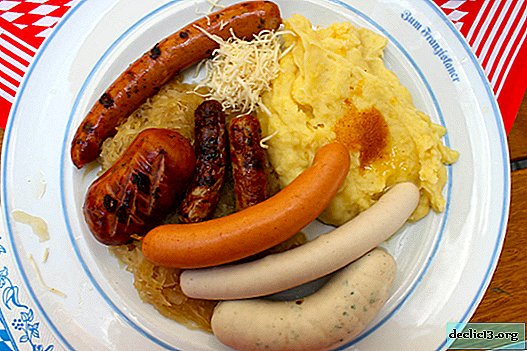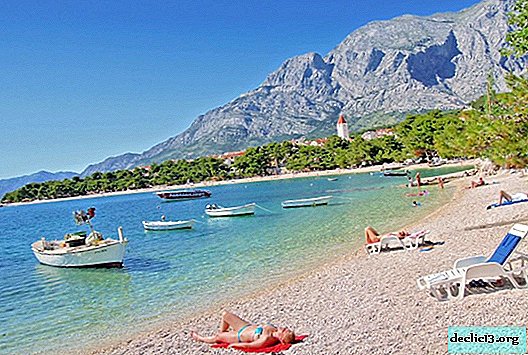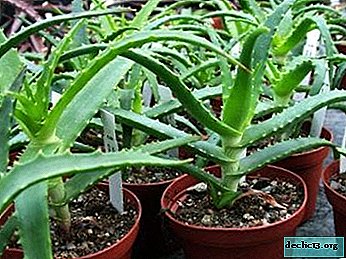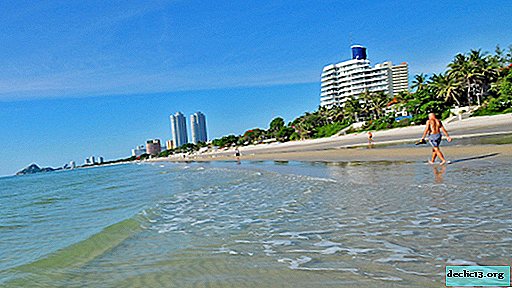What to try in Austria - top 15 gourmet dishes
The Austrians cannot be called conservatives in the field of culinary, national cuisine has been formed for many centuries and incorporates elements of French, Slavic, German traditions. Initially, Austrian cuisine was more reminiscent of a peasant menu and only with time did gourmet food appear in it. Our review is dedicated to the question - what to try in Vienna?

Interesting fact! The pride of national cuisine is rightfully considered sausages and sausages. According to statistics, more than one and a half thousand kinds of meat delicacies are produced in the country. In the capital's restaurants and cafes they are served under the name "frankfurter".
General information about national Austrian cuisine
 Boishelle
BoishelleEach Austrian region has its own culinary traditions. For example, in Vienna, traditional food is bohel, schnitzel, tafelspitz, smoked meats. As a side dish, as a rule, sauerkraut is used. Viennese goulash, which appeared during the existence of the Austro-Hungarian Empire. Food more like meat stew, served with dumplings, potatoes. By the way, dumplings in Vienna are an independent dish seasoned with bacon.
Austrian desserts deserve close attention. Many treats with Austrian roots are known all over the world. This is Sacher cake, and apple strudel. A great addition to desserts is coffee. Locals masterfully prepare this drink.
Interesting fact! About 50 thousand hectares of vineyards are grown in Austria, but outside the state, Austrian wine is not as common as French or Georgian. Nevertheless, while relaxing in Vienna, do not deny yourself the pleasure of drinking a glass of dry white wine.
Meat dishes
The Austrians prepare a huge amount of meat treats, of course, the most popular food - sausages, sausages. They will be served as part of a set lunch or with salad. It is difficult to list all the national Austrian meat dishes; suffice it to say that the menu contains dozens of treats from pork, beef, veal, chicken, game. In the autumn, the hunting season opens and food from venison, roe deer, and wild boar appears in local culinary establishments, and in February culinary festivals are held.
Wiener SchnitzelTo the question - what is the first thing to try in Austrian cuisine? Locals respond - of course, Austrian schnitzel. It was first mentioned in a cookbook dating from 1884, however, historians claim that the recipe was known much earlier.

There are two versions of the appearance of schnitzel in Austrian cuisine. According to the first version, it was brought by Milanese merchants in the 14-15 centuries. And according to another - in the mid-19th century, Field Marshal Radetsky brought the recipe. In his report to the Austrian emperor, he spoke about an unusual way of cooking meat.
Good to know! The original recipe for cooking uses veal, the upper part of the hind leg.
In Vienna, the schnitzel is served so large that one serving is enough for two people. Do not be surprised if you hear that every gastronomic institution prepares meat delicacy best of all. The cost of schnitzel in Vienna from 7,20 € to 20 €.
Vienna sausagesThe most delicious sausages in Vienna can be enjoyed in street tents that are set throughout the city. From the point of view of a tourist who has come to Austria for the first time, it is easiest to find Wurstelstand toga tents on Albertina Square, on Ringstrasse and Graben.
The menu presents food of at least five kinds, sausages are sold together with a baguette or a roll, as a side dish you can pick up french fries, salad or sauerkraut.
Interesting fact! Sausages and sausages in Vienna do not boil, they are baked or fried.

Of course, sausages are considered the most popular in Austrian cuisine. Despite the fact that the name of the delicacy accurately indicates the country, sausages appeared in Germany. According to the Germans, they were invented by a resident of Frankfurt - the butcher Johan Georg Lachner. However, according to the Austrians, the recipe belongs to the same Lachner, but he invented the culinary after moving from Germany to Vienna.
Vienna TafelspitzInteresting fact! According to the original recipe, sausages include pork, lard, spices and ice. They can not be boiled, since the shell may burst and juice will leak.
Another national Austrian dish, which is prepared from boiled beef in a broth with vegetables, horseradish, onion sauce and fried potatoes. Serve food directly in the stewpan. The food is very satisfying, you can try it in the restaurant chain "Plachutta". The institution specializes in the preparation of this particular dish. When ordering, keep in mind that the serving sizes are very large and one is enough for two people. The cost of an Austrian dish of tafelspitz from 18 € to 33 €.

Good to know! Before going to Austria, it will not be superfluous to look on the Internet how to eat a dish. In restaurants, instructions are given to the tafelspitz with explanations or the waiter tells you how to proceed - a little broth is poured into the plate, then the meat and side dish are put in, a portion is eaten, the broth is poured again, beef and vegetables are laid out.
Side dishes
Viennese Potato Salad
A traditional side dish to schnitzel. Boiled potatoes are seasoned with salt, parsley, onions and vinegar. In many Austrian establishments, the cost of salad is included in the price of schnitzel, but it can also be ordered separately. Cost from 3,50 € to 8 €.
SauerkrautFor many Austrian regions and Vienna, sauerkraut is the main side dish and addition to many meat dishes of Austrian cuisine. There are many ways to pickle cabbage. The most common recipe practically does not differ from the generally accepted one, the only difference is that carrots and cranberries are not added to the cabbage, but bay leaves, juniper, caraway seeds and dill are put.

Soups
Soups in Austria belong to the category of snacks, in the national cuisine a large selection of both simple and original recipes is presented. All traditional Austrian dishes, and soups are no exception, are nutritious, because life in the mountains does not have the advantage of saving calories. Austrian food is characterized by the use of a variety of roots and seasonings.
Liver Meatball Soup (Leberknödelsuppe)Residents of Austria love the first dishes and, by tradition, each lunch begins with beef broth soup with small liver dumplings called Leberknedlszuppe.
 Pancake soup
Pancake soupThe first dish of beef broth (also used chicken) with different dressings. The most popular are sliced pancakes and greens.
Vienna goulashThe Austrian recipe is in many ways similar to the Hungarian version. Translation of the name of the food means - goulash in the cab. Serve a dish with scrambled eggs, pickled cucumber, sausage.

Good to know! Trying traditional goulash in Vienna is quite difficult; in many establishments guests are offered an analogue - a dish of Rindgulasch beef. The cost varies from 11 € to 14 €.
Dessert
Austrian cuisine is rich in various desserts. The most famous sweet dish is strudel. According to the original recipe, apples are wrapped in dough, but today in Austria they cook food with different fillings from fruits and berries. Be sure to try the famous Sacher cake, which is still baked using original technology. In the national cuisine there is a huge selection of sweets - pies, cookies, rolls, soufflé, puddings.
Vienna strudel
Austrian cuisine loses its authenticity and identity without apple strudel. A specialty of the dessert is the finest dough. Serve a treat with ice cream, liqueurs, powdered sugar.
The first sweet recipe appeared in an unknown author's cookbook, released in 1696. Today this copy is stored in the Vienna Library.
Viennese WafflesInteresting fact! For a meal, visit Vienna's oldest café, Café Mozart on Albertinaplatz 2, which has been open since the 18th century. You can also visit the Gerstner Café, founded by the Habsburg court pastry chef in the mid-19th century. The average cost of an Austrian strudel is 7 €.
Another national Austrian food - soft Viennese waffles, are distinguished by their porous structure, a large amount of filling, and multi-layered. The quality and topping are fruits, berries, cream, chocolate, ice cream. The average cost of one waffle is 4 €.
 Sacher Cake
Sacher CakeThis cake is considered the king of desserts all over the world. It is made from chocolate biscuit cakes, a layer of apricots, decorated with dark chocolate and cream. Named food by the name of the author - Franz Sacher.

Imperial Omelet KaiserschmarrnInteresting fact! It is noteworthy that the original technology for making the cake is kept secret. You can try the real Sacher only in the cafe at the hotel of the same name near the Vienna Opera.
Another famous treat in Austrian cuisine is a biscuit, mashed with a fork, crushed with icing sugar. Serve it with plum jam. The dessert is called imperial, because Emperor Franz Joseph liked to eat such a dessert. In Vienna, the Cafe Central invites you to try the imperial omelette, where Trotsky, Stalin, Lenin, Sigmund Freud loved to spend time. The institution has been operating since 1876. You can recognize the cafe by the impressive queue at the entrance, which, however, moves very quickly. The cost of dessert is about 9 €. The portions are large, one is enough for two people.
 Compare accommodation prices using this form
Compare accommodation prices using this formBeverages
We examined - what to try in Vienna from food. But Austrian cuisine is unthinkable without drinks such as coffee and beer. It is believed that coffee came to Europe through Austria, where it began to be consumed not just as a drink, but turned into a real ritual.
Interesting fact! According to statistics, residents of Vienna and all of Austria drink coffee several times more often than beer. Each coffee shop offers visitors at least 30 varieties of coffee. For each there is a certain cooking technique.
For tourists, coffee houses offer not just coffee, but a certain entourage - the drink is brought out on a silver tray, pastries or sweets are served, they must put a glass of water and fresh newspapers on the table.
Viennese coffeeFirst of all, in a cafe or coffee shop you need to decide on the portion size, there are two of them: a small one - a cliner, a large one - gosser.

One classic Viennese coffee recipe does not exist, in each coffee shop you will be offered several types of this drink. A fairly popular variety is Melange. Unified cooking technology also does not exist. Some establishments add sugar, and somewhere cream or milk. Melange - a cap of milk foam that decorates the drink.
Mulled wineInteresting fact! Popular coffee varieties in Vienna - in addition to traditional black coffee in the Austrian capital, espresso, coffee with ice cream and cream, with rum and ice are prepared.
In the cold season, mulled wine in Vienna is sold in every shop. For cooking, use dry red wine, lemon zest, sugar and a whole bunch of spices. The drink is served hot, you need to have time to drink it in 4-5 minutes, because when it cools, taste and aroma are lost.

Traditionally, Vienna and Austria drink mulled wine on Christmas Eve at fairs. The first is a fair in the historical part of the city - in the Spittelberg district. You can also visit the fair on the main Town Hall Square, where the central market is also located. Over 150 tents with mulled wine and other warming drinks work here.
Austrian beerAustria is considered a beer country and this is not only due to the wide variety of varieties of foamy drink, but also a well-developed culture of its use. The most popular beers:
 Ottakringer
Ottakringer- Ottakringer, Gold Fassl (Vienna);
- Gosser (Leoben);
- Stiegl (Salzburg);
- Weitrabrau (Whiter);
- Fohrenburg (Vorarlberg).
Each variety is distinguished by strength, density and a set of ingredients. Traditionally, beer is served in 0.5-liter mugs, but smaller glasses or a liter jug can also be ordered. Beer is sure to offer light snacks, they are included in the price of the drink.
Of course, this is not a complete list of national Austrian dishes that deserve the attention of tourists. We have offered the most common of a varied list of what to try in Vienna. Many metropolitan establishments that have been hosting guests for more than a century offer treats prepared according to unique, old recipes.

















